How Long Does Paint Protection Film Really Last?
According to many studies, each scratch on your bumper takes a year off your life. So, it would stand to reason PPF is the fountain of youth—for car lovers.
Let’s dig into what Paint Protection Film is, why you need it, and what to consider when buying.
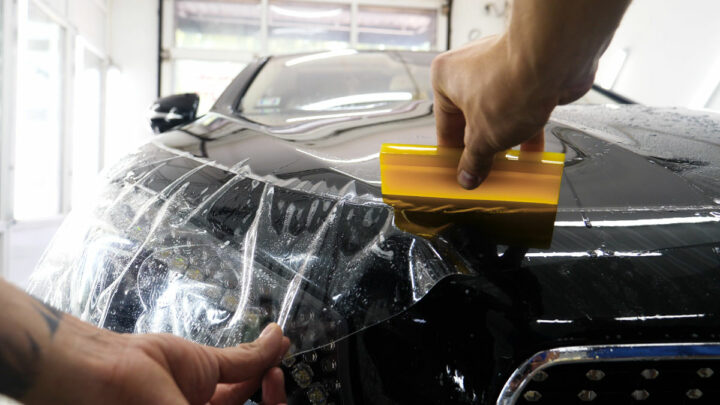
How Long Does PPF Last on Average?
You get what you pay for. Just like every automotive product, you can either pay up for the expensive stuff, or go cheap and have to re-do your work more often. The same idea applies to PPF.
On the low-end, say a brand like 3M, you’ll see PPF lasting for 7 years. This is due to a slightly cheaper adhesive and material.
On the other end of the spectrum, you’ll likely see XPEL and SunTek, with average prices around $10k for installation labor and materials, but you’ll also find your PPF lasts over 10 years.
It all depends on your budget and how long you plan on keeping your vehicle before turning around and selling it.
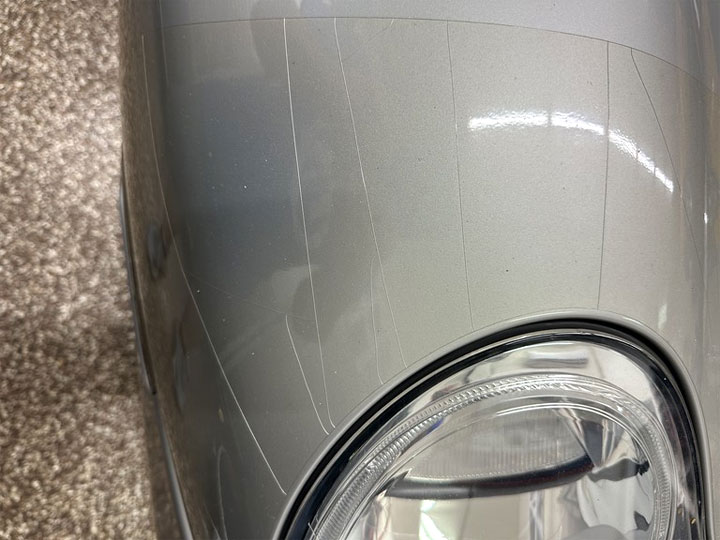
Related: Car Wrap vs Re-Paint (Questions to Ask Yourself)
Factors That Affect Paint Protection Film Lifespan
Oh, physics. Just like taxes, you’re always there and we hate you when you work against us.
#1 – Thickness
The thicker the PPF, the more protection it can offer for longer for more types of driving situations. Drive your car over 100mph? (I would never) Then you want the thicker stuff—because when that Wrangler on 40s sans mudflaps kicks up a golf ball-sized rock, you’ll want your PPF thick AF.
#2 – Quality
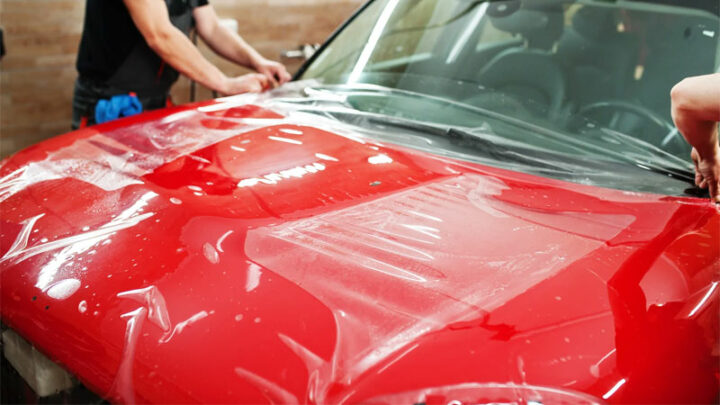
Not all paint protection films are created equal. Here are some of the most popular PPF brands on the market:
XPEL
Easily the highest quality PPF out there, but it comes at a price. By the time XPEL has been installed on a new car, you’re hovering around $8000.
What you DO get is a 10-year life, warranty, and self-healing PPF that will prevent surface scratches and withstand more abuse than you were initially expecting from “just some plastic on your paint”.
SunTek
For those that like to flaunt what they got and attract attention—both wanted and unwanted, try out SunTek. It’s a bit less expensive than the XPEL variety, but offers more shine, is slightly thinner, and is harder, so it will crack a bit easier.
We’re talking small differences that most people will never notice, but hey, the 5% that will notice will definitely tell you about it—luck favors the prepared.
Llumar
Llumar, or Llumar Valor Paint Protection film is a solid option for the “buy once, cry once” customer. It’s got a slight-shine, self-healing, ceramic coat surface and they offer a 12-year manufacturer’s warranty. Could be the move.
STEK
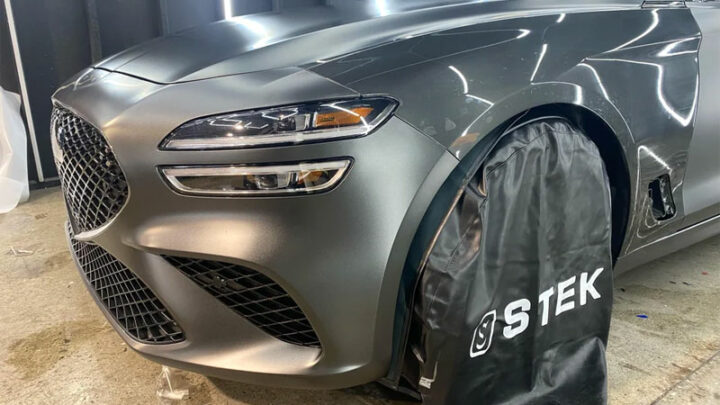
No, not Steak. STEK has two series: the Dyno series (10-year warranty) and the Pro Series (5-year warranty). Don’t ask me why they chose those names, but that’s what they are.
From what I can tell during my research, they offer great customer service, and a high level of visual clarity on both of their series. They state that, even if you have metallic flake in your paint, you’ll still be able to feel—and see—the luster through their PPF.
You know the saying:
“All that glitters is gold, through Paint Protection Film.” ~Socrates, 638 B.C.
3M
Ah, the everyman. The average Joe choice. <Insert quip about “if you’re on a budget, choose this one>
3M is a MASSIVE company, and economies of scale dictate that they’re better at producing more PPF than the other smaller companies, combined—all for a cheaper price. What you pay is what you get.
Hot take: 7-year warranty against manufacturer defects, thinner quality, but a much cheaper cost at around $1399 means you could get 28 years of 3M PPF at the same price of 12 years of Llumar PPF. I know which one I’d get.
Clear Bra
Consider yourself a bit of a minimalist? Go for clear bra. While still being paint protection film, the term “clear bra” simply implies that only the front section of the vehicle has PPF applied. Typically, this includes the bumper and/or hood areas that are most prone to rock chips.
I have it on my 20-year-old Toyota Sequoia and it’s peeling, cracking, and yellow. BUT, I assume the paint underneath is flawless and sparkling.
From my research, installation of a clear bra will set you back about $1000, and will keep the front of your car decently protected for about 10 years.
#3 – Surface Prep
A clean surface is going to help the adhesive process more than anything. Typically, soapy water is sprayed on the surface to clean it and alcohol added to the mixture to help with degreasing. After this, a slip solution is applied to the surface using a clay bar.
#4 – Installation
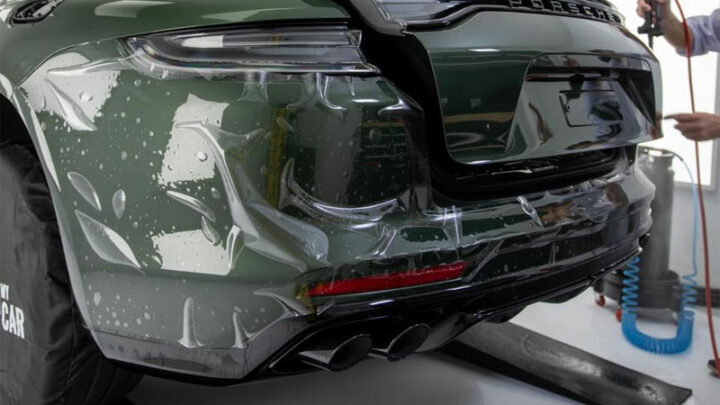
The process begins by putting the PPF on the area that the slip solution was applied to. It’s placed on with the adhesive side facing up. This helps avoid getting dirt and other impurities on the surface. Then, the liner is removed, and more slip solution is sprayed on the adhesive side. The PPF is then applied to the vehicle.
#5 – Additional Protection
Do you need it? No. Should you get it? Maybe. Adding ceramic coating to your PPF will give you more protection, but you don’t really need it.
It all depends on what your budget is and how much you are willing to pay to make sure your care always looks flawless—not just 95%. Hand washing is a great way to protect your paint, and it’s almost free.
#6 – Environment
If you park your car outside, with us poors, you’ll get more UV damage to your paint, seals, and interior. A garage-kept car is almost always going to be more cosmetically perfect than your car that just had its catalytic converter stolen off the side road.
#7 – Driving Habits

Again, physics raises her ugly head. If you drive fast, you’ll get more stones flying faster at your paint. This will result in more chips and it will ruin your paint faster. Drive through puddles, mud, over rocks, in the grass, and your paint will suffer.
But then again, when did anyone tell stories about the “time where they followed the rules, drove the speed limit, and made sure their paint was perfect for the next owner to mess up.”
Manufacturer Warranty Comparison
As discussed above, 3M has the shortest manufacturer warranty at 7 years, and Llumar has the longest at 12 years. While 3M is shorter warranty-wise, it’s also MUCH cheaper, so just vote with your wallet and choose the option that works best within your life.
Maintenance Best Practices
The best way to maintain your PPF is to wash it. Make sure you use the two bucket method, keep grit and dirt off the surface, and take care of your surface just as if it was your Dad’s car that he let you borrow and you REALLY don’t want to mess it up.
When to Replace PPF
If you see the surface start to dry, crack, discolor, or just seem off at any time close to the 7 to 12-year mark (depending on brand), it’s a good time to replace it.
20 years is far too long to wait as it will be a real pain in the ass to remove. Ask me how I know.
Read Also: The CORRECT Way to Remove Plasti Dip From Wheels
- How Long Does Paint Protection Film Really Last? - Apr 23, 2024
- How to Reduce Wind Noise in Your Car (Locate the Source) - Nov 22, 2023
- How Long Can You Drive on a Spare Tire? (and How Fast Can You Go?) - Sep 13, 2023
